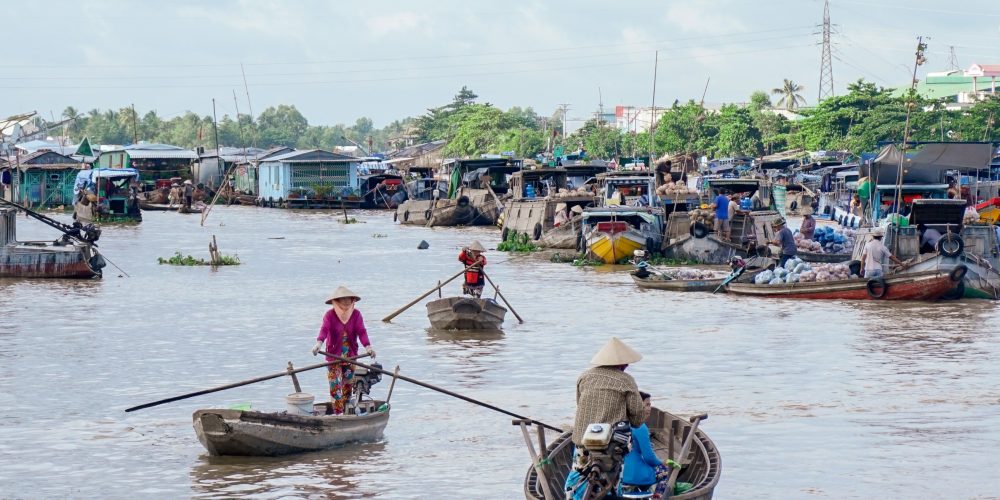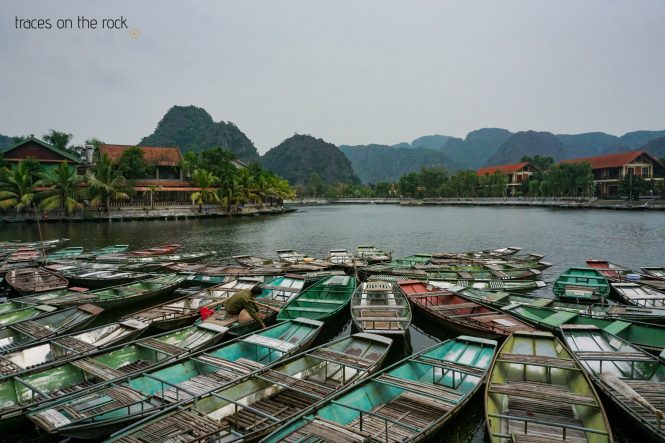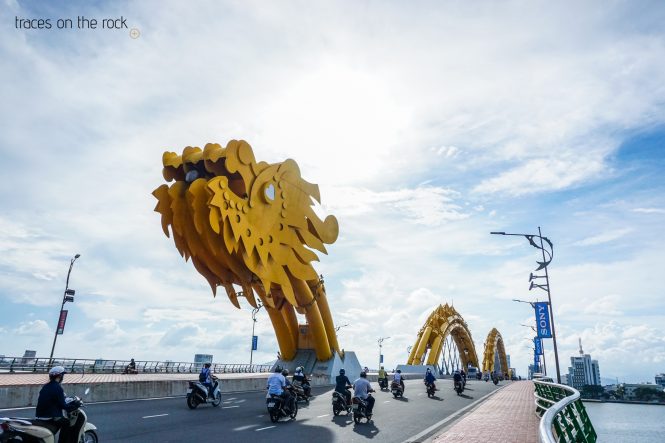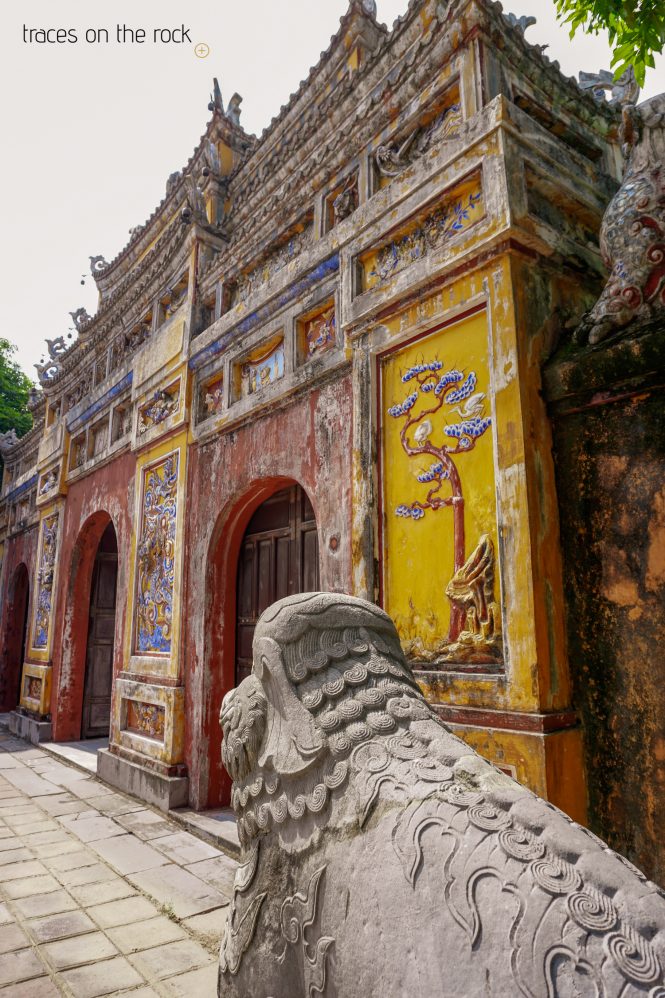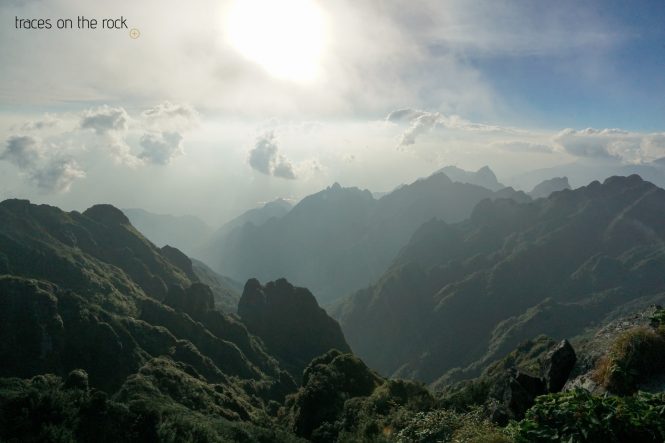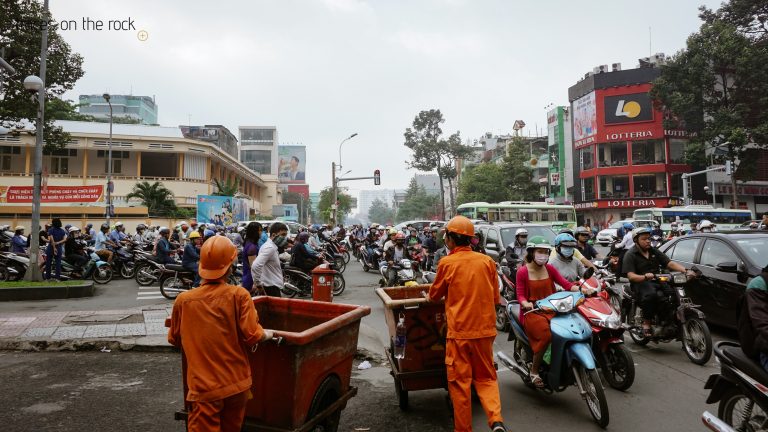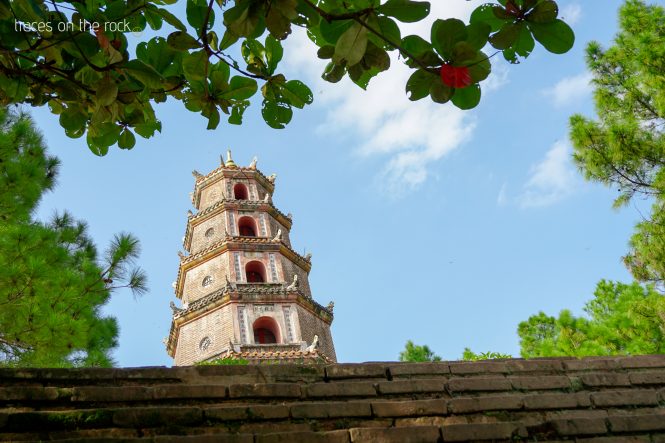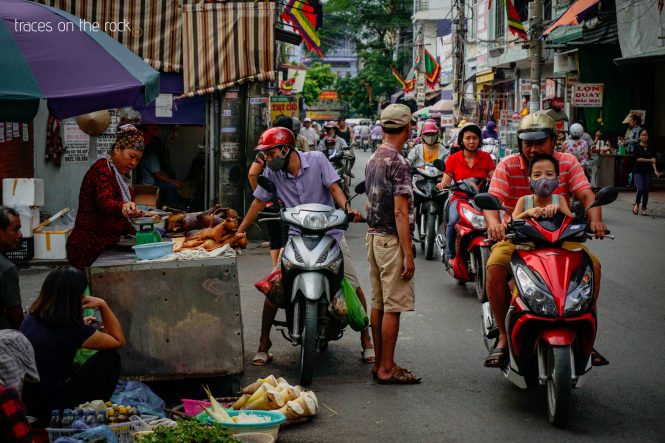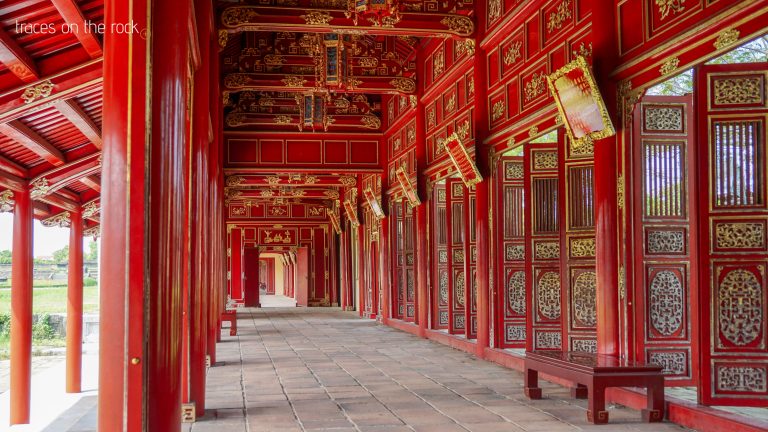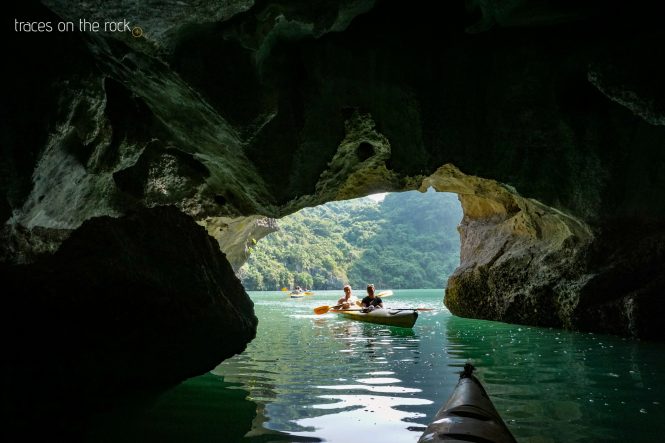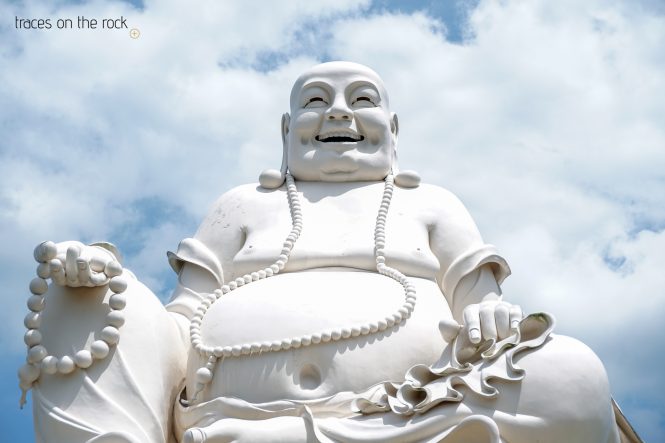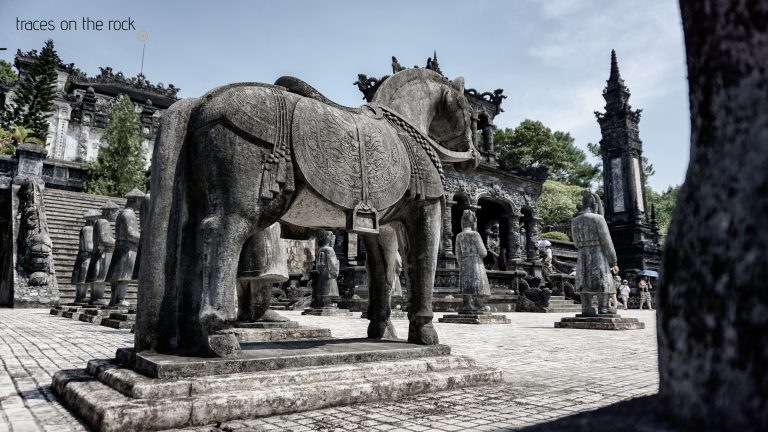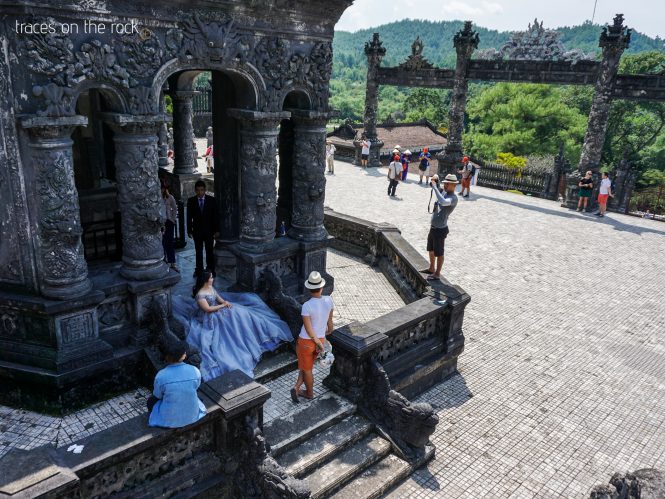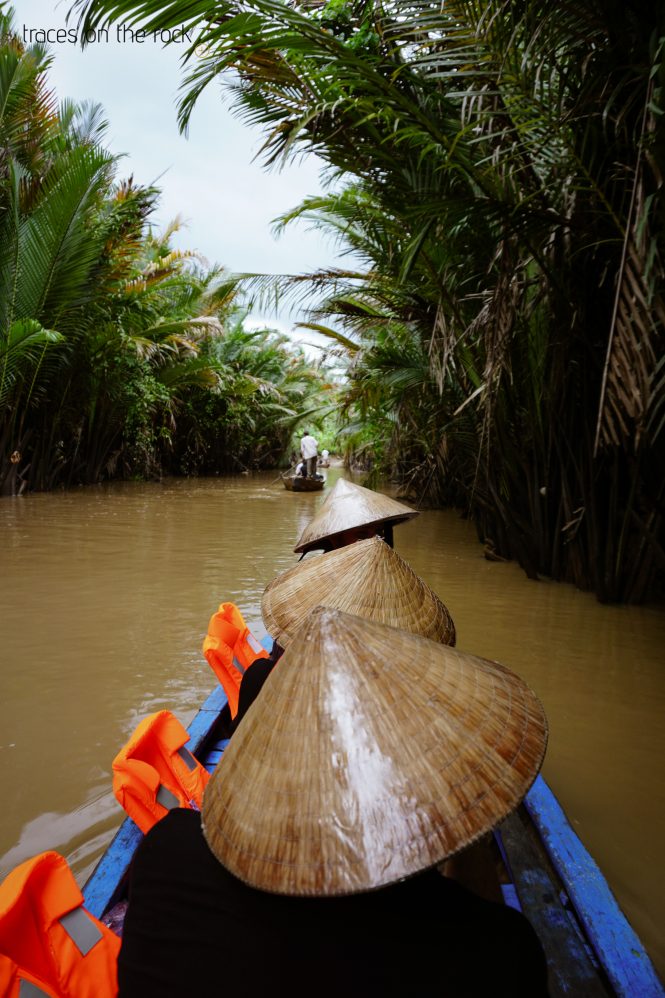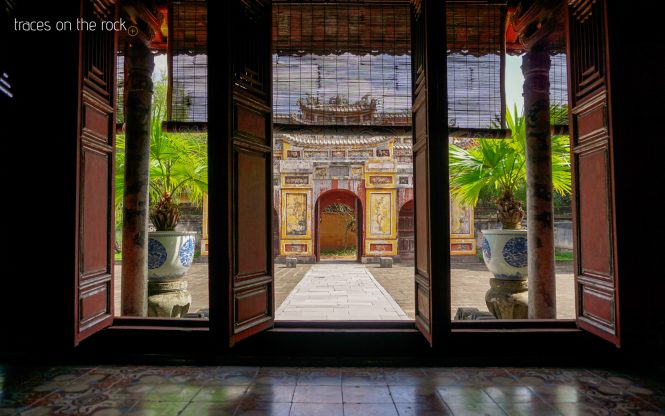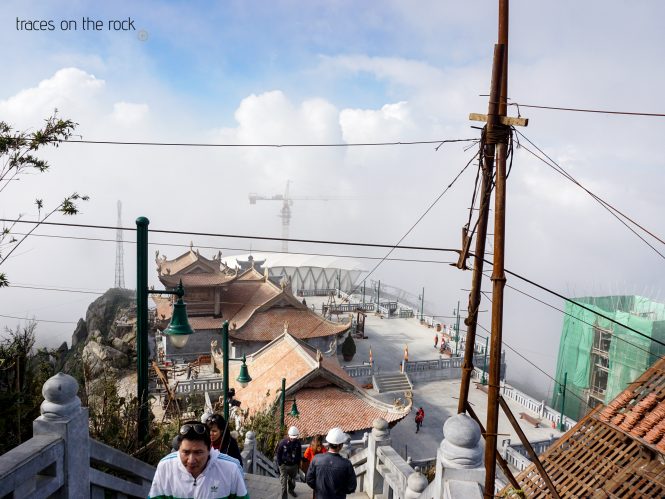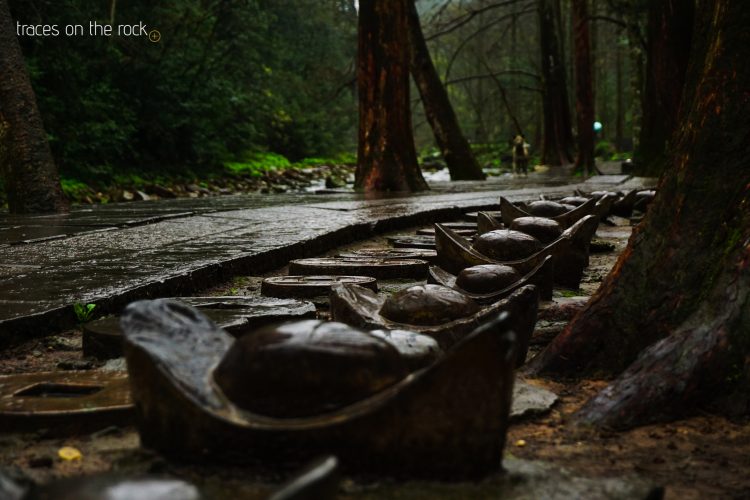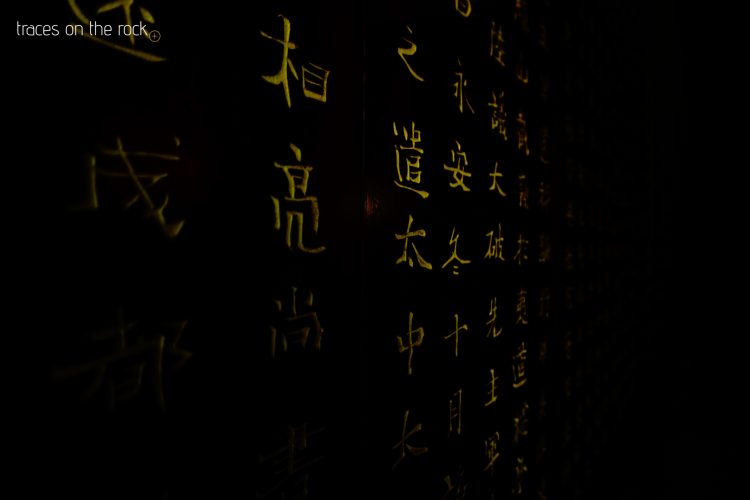The country is home to over 53 ethnic groups. I expected a planned economy and found myself in an economically aspiring state of the socialist market economy. Throughout the country the popular red flag wafted with a yellow star in the wind. White, western faces smiled from the billboards and shops of Samsung and Huawei are on every street corner. Western brands like Starbucks or McDonalds are part of the everyday street scene. Scooters have displaced the bicycles. Vietnam is on the rise, people are consumption-oriented. The country no longer offers the promised adventure, although many backpackers still see a motorcycle tour on a Honda Win as an adventure. But the roads are mostly well developed, especially between Ho Chi Minh and Hanoi. Only those who detour may find their adventure on sandy slopes and remote places.
A negative climax in the tourist sales I experienced in Sapa, a region in northern Vietnam. Once, Sapa was the refuge of the French from the heat of summer. Now, the former mountain station has become a popular destination. Not least because of its landscapes of countless rice terraces, the native ethnic groups of the Hmong, Red Dao and Tay, and the Fansipan (3143m), the highest mountain in Indochina. But this development is accompanied by a sell-off of land and people. The city is overflowing with accomodations to house the tourist crowds. Unfortunately, the infrastructure cannot cope the amount of tourism. Traffic jams occur frequently, because the roads are too narrow or broken. Construction sites and wild parking cars block the flow of traffic as well. Furthermore, the inadequate waste disposal lead to littered streets and backyards.
In this environment, I am besieged by several women’s groups of different ethnic groups. They followed me regularly and wanted to sell bracelets and bags. They were persistent. Sometimes I was lucky and other foreign tourists caught their attention. Best sellers in Sapa are hiking tours to villages of various ethnic groups. These can also be booked with accommodation. The ethnic groups sell themselves or a picture of them that we, the tourists, like to see. In other words, we expect people in colorful, as authentic as possible garments that live in rustic bamboo or wooden huts, so that we can experience the breath of the exotic (similar to Thailand with the Long-Neck Tribes). Of course, money is required for visiting the villages or to take photos of or with members of the ethnic group. I dare to doubt the authenticity of these villages. However, it is reassuring to see that there are schools in these villages, so it remains to be hoped that the number of children selling jewelery and photos to tourists in the streets of Sapa will decline in the future.
The ghost of the mountain
Another sad sell-off is currently happening on the mountain Fansipani. Once only accessible via a multi-day hiking tour, the summit can now easily be visited by cable car. The technical data is impressing and is a window into the future of the mountain. 2000 people can be transported per hour. The cablecar cover over 6km without further mast and overcomes more than 1400 vertical meters. But the mountain owns more superlatives. On the mountain are two restaurants, a huge souvenir shop and a temple located. Everything is newly built and accommodations are planned too. I have to walk up 600 polished steps up to the summit while I am passing a surreal landscape of construction cranes, temple buildings, archways and scaffolding. When looking down the steps, I see cranes rising up into the clouds. Once upon a time, everything had to be carried up by foot to enable it to be developed. It feels like you’ve buried the mountain under concrete and taken its soul from it. I mourn for the mountain and at the same time I am fascinated by the surreality. Sapa definitely leaves me with mixed feelings.
Deep water soloing at Halong Bay
For climbers, Vietnam has a lot to offer. The Halong Bay with its countless rocks offers plenty of opportunities for deep water soloing (climbing without a rope and jumping into the water). Together with Christian, my climbing partner from Germany, we booked a guided tour and took a boat to the rocks. I needed some time to jump into the water after the climb. My feel-good limit is set at six to seven meters. Everything above this height requires a great deal of overcoming. Our guide climbed his project after our excursion. I estimated that the route was about 30m high. It was his first successful climb. The jump was scary, but there were no injuries except nosebleeds.
In Vietnam, I also had to deal with the fact that I would leave Asia. I would spend the next time in Europe. It felt like a lasting goodbye. But the future is not yet written.

